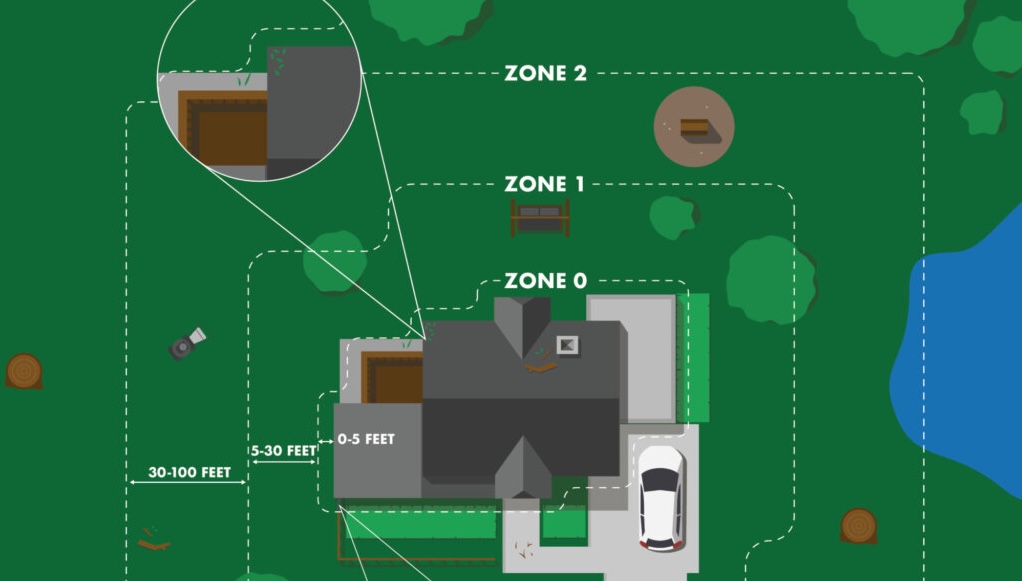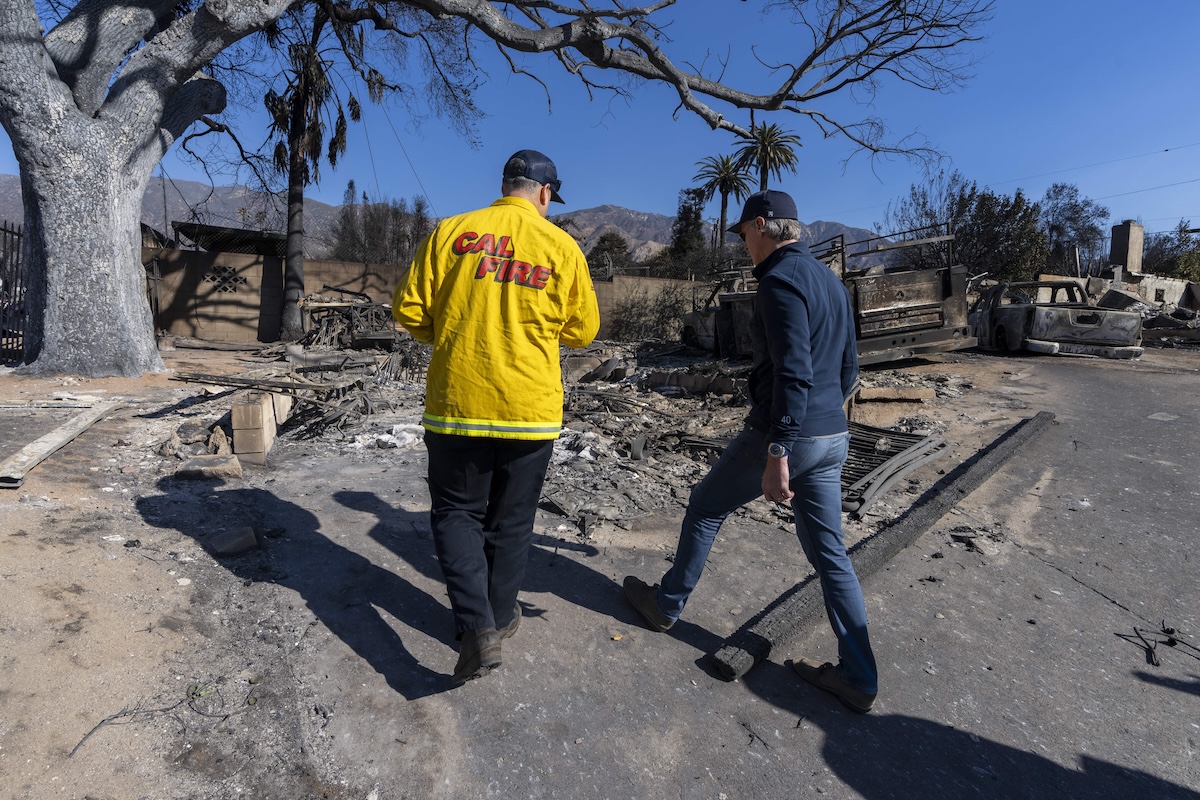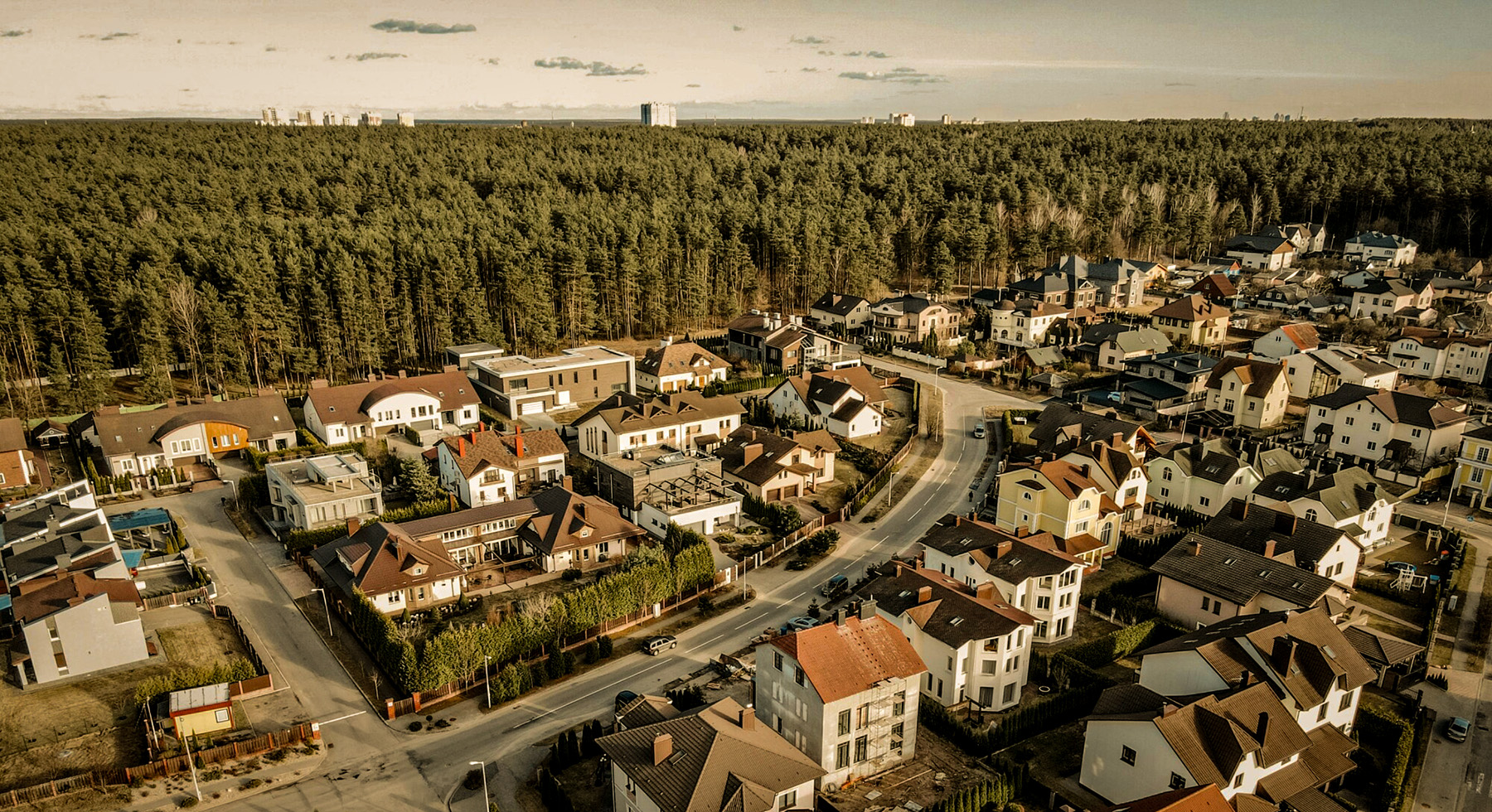Governor Newsom Signs Executive Order to Further Improve Community Hardening

Governor Newsom Signs Executive Order to Further Improve Community Hardening and Wildfire Mitigation
On February 6, Governor Newsom signed an executive order to launch key initiatives to continue adapting to future wildfires and strengthen community resilience to urban conflagration (large destructive fires that spread beyond natural or artificial barriers wherein structures themselves become the fuel that spreads the fire). The executive order:
- Directs the State Board of Forestry to accelerate its work to adopt regulations known as “Zone 0,” which will require an ember-resistant zone within 5 feet of structures located in the highest fire severity zones in the state.
- Tasks the Office of the State Fire Marshal with releasing updated Fire Hazard Severity Zone maps for areas under local government responsibility, adding 1.4 million new acres of land into the two higher tiers of fire severity, which will update building and local planning requirements for these communities statewide.
- Requires CAL FIRE and Cal OES to work with local, federal and tribal partners on improvements to the Federal resource ordering system for wildfire response.
California Continues Quick and Effective Action to Assist Los Angeles Fires Recovery

California Continues Quick and Effective Action to Assist Los Angeles Fires Recovery
February 7, 2025 – Governor Newsom has launched historic recovery and rebuilding efforts to accelerate recovery and signed legislation providing over $2.5 billion to support ongoing response and jumpstart recovery efforts for Los Angeles. The Governor has signed 15 executive orders that together are:
- streamlining rebuilding of homes and businesses;
- cutting red tape and suspending permitting requirements under the California Coastal Act;
- removing bureaucratic barriers to provide critical regulatory relief to help fire survivors rebuild, and access essential services;
- providing tax and mortgage relief to impacted communities and businesses, as well as extending tax deadlines;
- fast-tracking temporary housing and protecting tenants; and
- mobilizing debris removal and cleanup and protecting communities from flooding and landslides.
Additionally, State and federal resources have come together to accelerate a safe recovery for Los Angeles:
- The California Conservation Corps (CCC) responded quickly in recovery efforts by installing silt socks and straw wattles around storm drains in the burn zones to keep contaminants found in the ash from washing into the Los Angeles watershed. This was the largest deployment of Corpsmembers in CCC history targeting erosion and contaminant control.
- The California Department of Water Resources deployed over 30 watershed experts and engineers to Los Angeles to support fire mitigation work in burn scar areas and protect downstream communities by keeping toxic runoff out of local watersheds.
- The California Department of Conservation deployed its Watershed Emergency Response Teams to the front lines to quickly assess post fire hazards such as debris flows, flash floods, and falling rocks.
- The California Department of Fish and Wildlife (CDFW) is supporting intake of burned and impacted wildlife to rehabilitation centers, as well as relocating wildlife to help expedite recovery for both people and animals. CDFW also mobilized staff and volunteers to rescue a population of endangered Steelhead trout in Topanga Creek.
- California State Parks is working with US EPA, Cal OES, and CalEPA to help the recovery effort by hosting two temporary sites to safely process hazardous household materials removed from properties destroyed by the Palisades Fire.
- The U.S. Forest Service continues ongoing assessment of damage from the Eaton and Hughes fires through the deployment of Burned Area Emergency Response (BAER) Teams. These teams include scientists, historians and other subject matter experts that identify potential emergency threats on federal lands, such as human life and safety, national forest property, critical natural resources, and critical pre-historic and historic properties, and more. In addition, BAER Teams coordinate with other agencies, who assist businesses, homes and landowners preparing for rain events and potential flooding and debris flow in fire affected areas.
- The Bureau of Land Management (BLM) is currently engaging in emergency stabilization and rehabilitation (ESR) planning following the Border 2 Fire to mitigate the potential impacts of the burned area, such as mud and debris flows, erosion, and other damages. Additionally, BLM assessed impacts of the Hughes Fire and no emergency stabilization or rehabilitation needs were identified.
New Online Resources Now Available to Help Prepare for Wildfires

New Online Resources Now Available to Help Prepare for Wildfires
Understanding how best to prepare for wildfire season just got easier with several new, easy-to-navigate online resources that identify low-cost and achievable recommendations to protect yourself, your home and loved ones.
ready.ca.gov: On May 24, Governor Gavin Newsom announced the launch of ready.ca.gov, a new one-stop-shop for Californians to prepare for wildfires and other emergencies. The website is part of Listos California, a state effort that connects communities with resources before, during and after emergencies. The website offers resources and alerts for wildfire and wildfire smoke risks.
firePLANNER: CAL FIRE’s newly updated firePLANNER is a web-based platform that helps residents develop customized readiness plans for wildfire and other emergencies. It also provides information on preparing home and property for wildfire; creating an evacuation plan, including for pets and livestock; and special considerations to keep in mind during a wildfire. Users can also access information on active California wildfires. FirePLANNER is available in both English and Spanish.
wildfirerisk.org: The USDA Forest Service now offers an easy-to-use website to help communities understand, explore, and reduce wildfire risk. It includes interactive maps with the latest data and innovations in vegetation, weather, and fire behavior models, along with updated and improved building footprint datasets, a new funding section to help communities find grants and support for wildfire risk reduction, and a new feature called “Risk Reduction Zones” to help communities see the most effective mitigation activities in different locations.
wildfire defense videos: The Resource Conservation District of the Santa Monica Mountains released a series of wildfire defense videos to serve as an educational hub to provide home-hardening and defensible space information to prepare and defend your property and yourselves against wildfire ignition. The series provides guidance on home hardening, defensible space, fire ecology, and preparedness.
